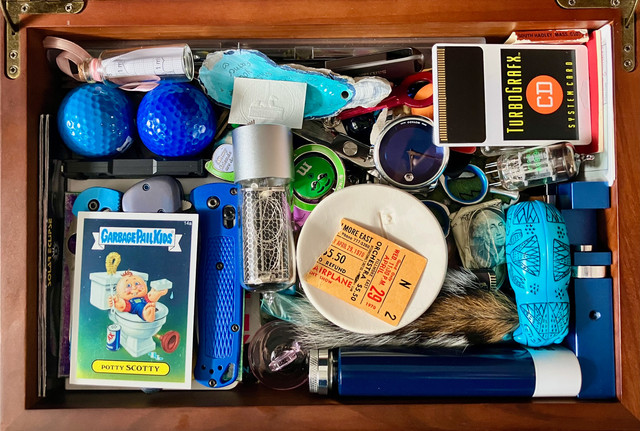HOME | DD
 lambdaDevice — Ruhmkorff induction coil restoration
lambdaDevice — Ruhmkorff induction coil restoration

Published: 2013-06-05 10:38:10 +0000 UTC; Views: 514; Favourites: 0; Downloads: 0
Redirect to original
Description
This is a ca. 1900 Ruhmkorff induction coil used to power X-ray, Crookes or other gas discharge tubes. When I bought it in an antique shop in Vienna, it was missing the essential spark gap parts between the two brass mounts. For testing functionality, I just inserted two brass rods (1.) that were bent for another purpose - they served as a small Jacob's ladder before.With the helping hand and her teaching me the ways of hard soldering, my friend Sophie W. made it possible to me to restore this great piece of history.
In (2.) you can see we fitted a 4mm brass tube onto a 2.5mm brass rod and hard-soldered it to a round disc sawn out of .5mm brass sheet metal. Of course everything got a surface treatment to eliminate most scratches on the metal. The second electrode (to the right of the circular plate) is just a plain rounded 2.5mm brass rod.
(3.) Out of leftover ebony (from an East German instrument builder's belongings) I turned the handles for the electrodes. Imagine how difficult this is when you don't have a lathe to work on and therefore are left to rely on a standing drill and some rough and fine files...
But now the apparatus is complete, resembling very closely what it looked like back at the beginning of the 20th century.
And it still works, as you see in (4.)!
One word of attention, though. What you don't see on the picture is that the wooden baseplate is bent and warped. I highly suspect this happened when operating the machine either with too high a current or without the spark gap or with a short-circuited spark gap. Those things contain a very weakly crafted condenser in the baseplate, often insulated with tar or wax. Powering a unit with current other than from a thouroughly preset lab power source or contemporary battery can result in damage to the condenser, and in consequence to the coil and other parts of these delicate machines! If you ever find something like this, ask someone experienced in electronics or in measuring out the specifications of the power needed before you destroy a piece of history!














